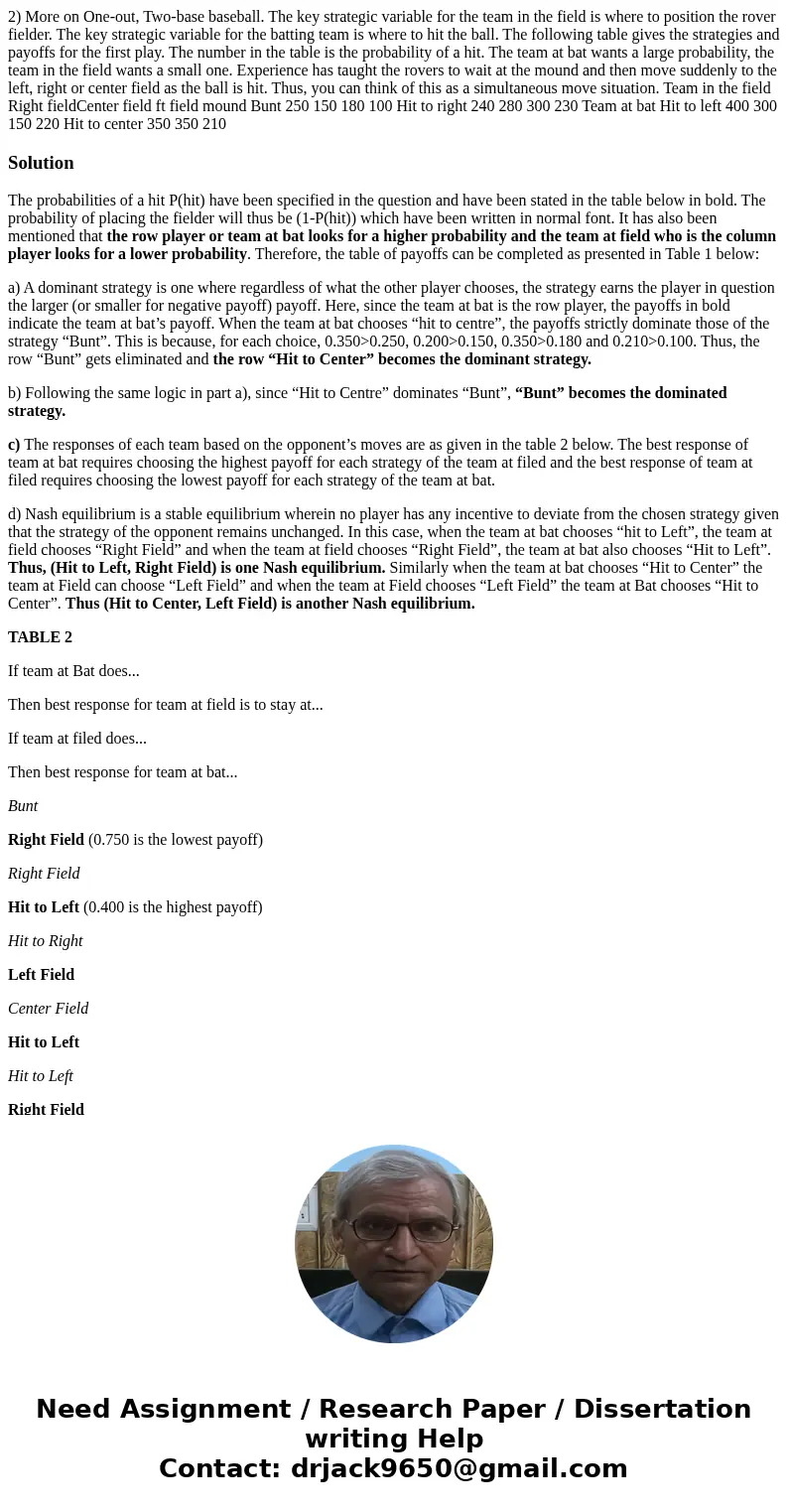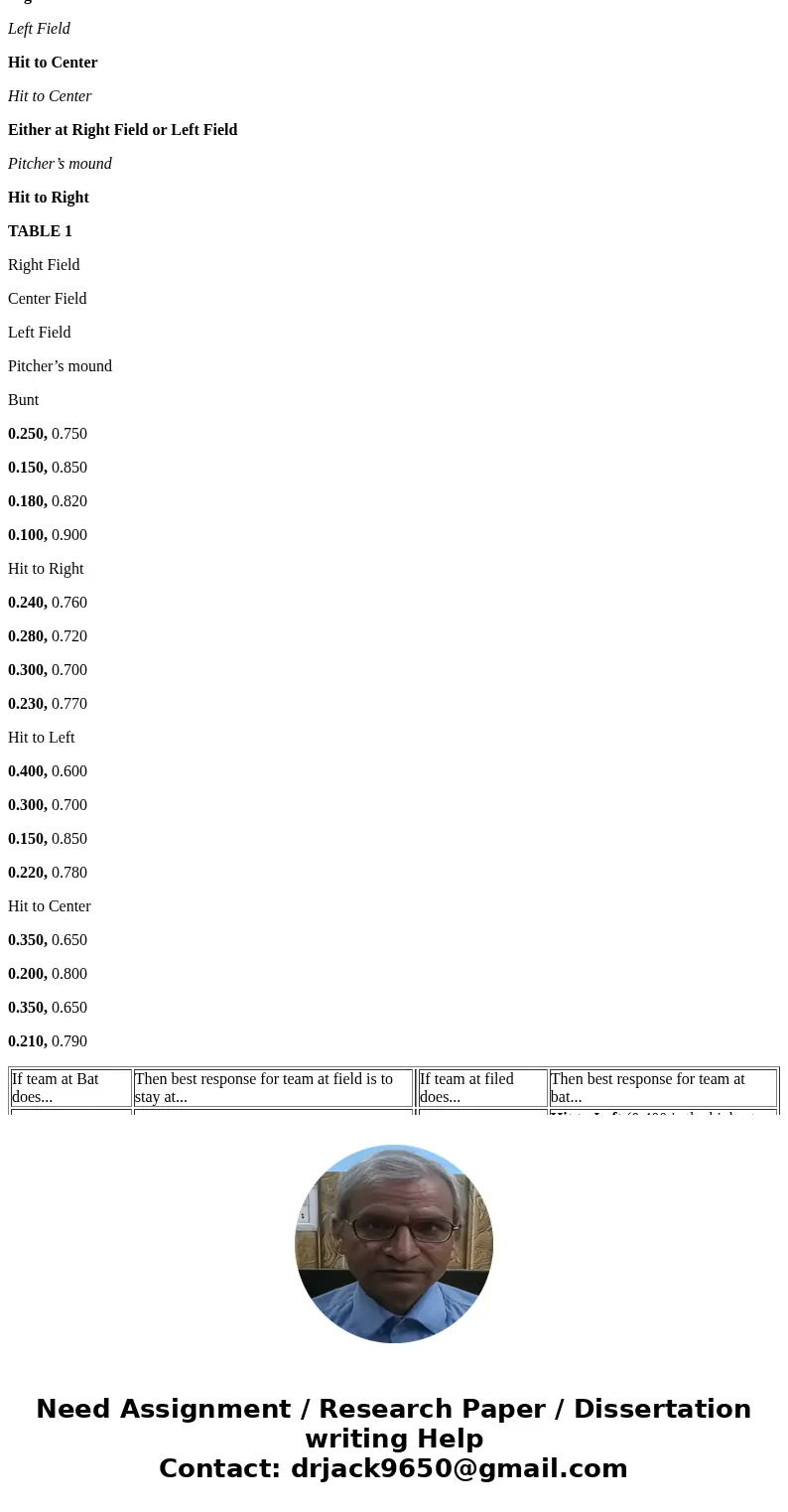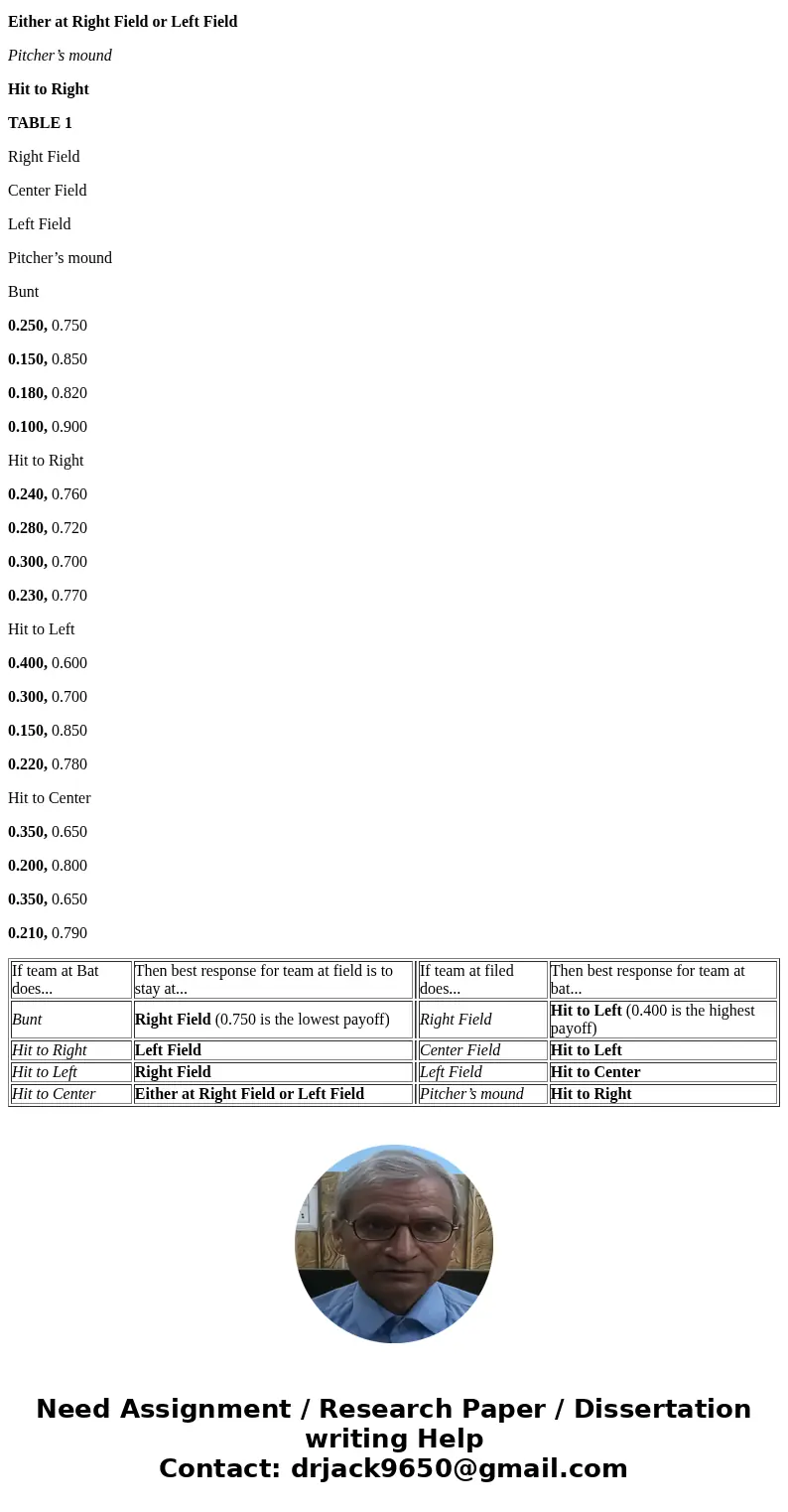2 More on Oneout Twobase baseball The key strategic variable
Solution
The probabilities of a hit P(hit) have been specified in the question and have been stated in the table below in bold. The probability of placing the fielder will thus be (1-P(hit)) which have been written in normal font. It has also been mentioned that the row player or team at bat looks for a higher probability and the team at field who is the column player looks for a lower probability. Therefore, the table of payoffs can be completed as presented in Table 1 below:
a) A dominant strategy is one where regardless of what the other player chooses, the strategy earns the player in question the larger (or smaller for negative payoff) payoff. Here, since the team at bat is the row player, the payoffs in bold indicate the team at bat’s payoff. When the team at bat chooses “hit to centre”, the payoffs strictly dominate those of the strategy “Bunt”. This is because, for each choice, 0.350>0.250, 0.200>0.150, 0.350>0.180 and 0.210>0.100. Thus, the row “Bunt” gets eliminated and the row “Hit to Center” becomes the dominant strategy.
b) Following the same logic in part a), since “Hit to Centre” dominates “Bunt”, “Bunt” becomes the dominated strategy.
c) The responses of each team based on the opponent’s moves are as given in the table 2 below. The best response of team at bat requires choosing the highest payoff for each strategy of the team at filed and the best response of team at filed requires choosing the lowest payoff for each strategy of the team at bat.
d) Nash equilibrium is a stable equilibrium wherein no player has any incentive to deviate from the chosen strategy given that the strategy of the opponent remains unchanged. In this case, when the team at bat chooses “hit to Left”, the team at field chooses “Right Field” and when the team at field chooses “Right Field”, the team at bat also chooses “Hit to Left”. Thus, (Hit to Left, Right Field) is one Nash equilibrium. Similarly when the team at bat chooses “Hit to Center” the team at Field can choose “Left Field” and when the team at Field chooses “Left Field” the team at Bat chooses “Hit to Center”. Thus (Hit to Center, Left Field) is another Nash equilibrium.
TABLE 2
If team at Bat does...
Then best response for team at field is to stay at...
If team at filed does...
Then best response for team at bat...
Bunt
Right Field (0.750 is the lowest payoff)
Right Field
Hit to Left (0.400 is the highest payoff)
Hit to Right
Left Field
Center Field
Hit to Left
Hit to Left
Right Field
Left Field
Hit to Center
Hit to Center
Either at Right Field or Left Field
Pitcher’s mound
Hit to Right
TABLE 1
Right Field
Center Field
Left Field
Pitcher’s mound
Bunt
0.250, 0.750
0.150, 0.850
0.180, 0.820
0.100, 0.900
Hit to Right
0.240, 0.760
0.280, 0.720
0.300, 0.700
0.230, 0.770
Hit to Left
0.400, 0.600
0.300, 0.700
0.150, 0.850
0.220, 0.780
Hit to Center
0.350, 0.650
0.200, 0.800
0.350, 0.650
0.210, 0.790
| If team at Bat does... | Then best response for team at field is to stay at... | If team at filed does... | Then best response for team at bat... | |
| Bunt | Right Field (0.750 is the lowest payoff) | Right Field | Hit to Left (0.400 is the highest payoff) | |
| Hit to Right | Left Field | Center Field | Hit to Left | |
| Hit to Left | Right Field | Left Field | Hit to Center | |
| Hit to Center | Either at Right Field or Left Field | Pitcher’s mound | Hit to Right |



 Homework Sourse
Homework Sourse